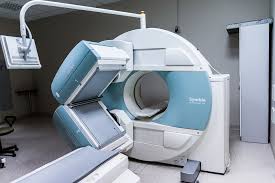On February 8, 2019, Science Daily (https://www.sciencedaily.com/releases/2019/02/190208142127.html) and the Journal of American Medical Association reported an announcement regarding Cardiac Magnetic Resonance (CMR) as a potentially non-invasive alternative to nuclear stress testiing, catheterizations and echocardiograms.
Duke University Medical Center Research
Results from a study at Duke University Medical Center suggests that the use of cardiac magnetic resonance (CMR) may advance cardiovascular testing that will identify the degree of severity of patients with coronary artery disease and those who may be prone to it.
Basic Principles of Cardiovascular Magnetic Resonance Imaging
The benefits of CMR is that as a means of diagnosing coronary artery disease, it is free of radiation. In addition to assessing coronary artery disease, CMR can assess ventricular function, tissue characterization, myocardial perfusion, flow quantification and also cardiovascular morphology.
In MRI testing, the patient enters into a static magnetic field once inside the MRI unit. The patient lies on the examining table that slides into the unit’s magnetic center. This forms the static magnetic field that surrounds the patient.
A cardiovascular stress test begins with an injection through an intravenous line of a contrasting agent such as a radioactive dye to create pictures showing blood flow to the heart and heart activity. Cardiovascular photos are taken before the patient begins exercise on a treadmill.
Once on the treadmill, the patient has a blood pressure cuff attached and also several other lines that monitor heart rate and changes that are recorded on a computer.
CMR Stress Testing – How It Differs
Using MRI technology for a CMR stress test avoids the need for injecting a radioactive dye into the patient’s arm. According to the American Medical Association (https://www.acc.org/latest-in-cardiology/articles/2016/02/22/08/49/role-of-cmr-in-the-assessment-and-prognosis-of-patients-with-stable-cad) the benefits of CMR include:
. Three dimensional capabilities enabling imaging in a wider range of imaging planes
. High spatial resolution
. Providing the same exercise and relaxation state as original MRIs with less patient stress as reported by the National Center for Biotechnology Information (https://www.ncbi.nlm.nih.gov/pmc/articles/PMC4816912/
Most Promising Benefits of CMR
Among the benefits to patients and doctors of CMR, top U.S. cardiologist recognize this new technique for stress testing as a most promising advancement to detecting fatal heart disease and as an aid to cardiovascular medical prognosis and treatment.
This new innovative stress test, using basic principles of MRI technology, is already implemented in academic health clinics such as Cleveland Clinic (https://my.clevelandclinic.org/health/diagnostics/16839-cardiac-mri-adenosine-stress-test). Other academic hospitals like RWJ University Hospital’s (https://www.google.com/search?q=Does+Robert+Wood+Johnson+Hospital+use+CMR+stress+testing%3F&rlz=1C1PRFC_enUS787US787&oq=Does+Robert+Wood+Johnson+Hospital+use+CMR+stress+testing%3F&aqs=chrome..69i57.17789j1j7&sourceid=chrome&ie=UTF-8) stress test laboratory is currently researching CMR stress testing.



